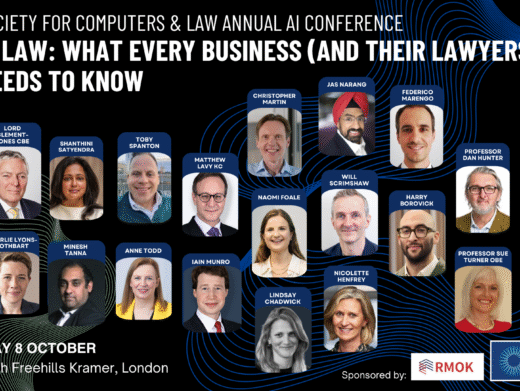It is of course far too early to
establish ‘standard market practice’ when it comes to processor clauses under
Article 28(3) of the GDPR. However, in the rush towards 25 May, the drafting,
review and negotiation of such clauses is becoming routine and this article
takes a look at some of the early patterns that are beginning to emerge from
the author’s experience.
Processors taking the lead
Although Article 28(3) leaves
open the question of whether entering into a binding contract as regards the
processing of personal data is an obligation on the controller or processor
(Article 83(4)(a) suggests it is both), the expectation has been that controllers
would ultimately take the lead as part of their compliance initiatives. However,
on a simple analysis of the number of enquiries and instructions received from
controllers versus processors, it seems that processors are taking the lead.
For some processors, taking the
lead enables them to define the allocation of responsibilities and risks and provides
an opportunity to establish the most favourable commercial position on the
appointment of sub-processors under Article 28(2) (see below) and on some of
the areas where Article 28(3) is less prescriptive, for example, regarding the format
and timescales for the return of personal data under Article 28(3)(g) and the frequency,
notice periods and other conditions for audits and inspections under Article
28(3)(h). For other processors, taking the lead is more about demonstrating
that they are a proactive and reliable service provider that is ahead of the
game.
Appointment of sub-processors
This is where the real fun starts
(if you can call it fun) and where supply chain assurance can start to break
down very quickly. Article 28(2) provides two options for the appointment of
sub-processors:
- general written authorisation, subject to an
obligation on the processor to inform the controller of any intended changes so
that they have an ‘opportunity to object’; or - specific authorisation of named sub-processors
to undertake discrete processing tasks.In practice, it seems that there
is little to be gained from favouring one option over the other as the addition
or replacement of other processors will invariably require the controller’s
consent. However, the general written authorisation option seems to be preferred
by processor as:
- unless the controller makes a specific enquiry, the
processor does not need to share a list of its sub-processors at the outset
(though in practice many cloud service providers do, as seen from the examples
below); and - it provides flexibility in the event that a
controller objects to any proposed change: either the customer can pay more for
the processor to maintain an existing arrangement for that controller’s
benefit, or either or both parties may have a right to terminate the agreement
before such change is implemented.
In terms of examples ‘in the
wild’ (ie data processing clauses that can be found via a Google search – some
vendors choose not to publish them):
- Google takes
the specific authorisation approach, with a separate page listing all of the Google
and non-Google sub-processors authorised by the controller. Google will give 30
days’ prior notice of any changes, from which point a controller is given 90
days to terminate the agreement immediately on written notice; - Salesforce
takes a hybrid approach: customers can request a current list of sub-processors
at any time and subscribe for notifications of new sub-processors before they
are authorised by Salesforce. If a customer wishes to object to any proposed
changes, they have 10 business days from the date of Salesforce’s notice to do
so and if Salesforce cannot agree a ‘…commercially reasonable change to
Customer’s configuration or use of the Services…’, the customer can terminate
the affected services (a similar approach is taken by Cloudflare,
IBM
and Microsoft) - Oracle
and VMware
appear to adopt the general authorisation approach, but without appearing to
give controllers a right to object if any changes are proposed.
Of course, Article 28(2) does not
require a processor to identify each sub-processor with a specific processing
activity (the only provider mentioned above that does is Microsoft). This makes
it difficult for controllers to undertake more than a superficial level of due
diligence of the processing supply chain at the point of purchase/subscription,
though one would expect a processor to explain the purposes of any change and
related (sub-)processing activities when giving notice of any proposed changes to
its customers.
Sometimes sub-processing clauses
will give a controller the right to request copies of the agreements between a
processor and its sub-processors, subject to the redaction of any commercially
sensitive provisions. However, on one occasion in my experience, the processor
refused to provide the same until the customer signed up for the service. Often
therefore, the controller will have to rely on the processor’s obligation to
ensure that agreements with any sub-processors reflect the GDPR’s requirements
and that the processor will remain liable for the performance of its sub-processor’s
obligations (Article 28(4)).
Recovery of costs and expenses
There is often negotiation over
the extent to which a processor may recover its ‘reasonable costs and expenses’
for fulfilling the requirements set out in sub-paragraphs (e) to (h)
(inclusive) of Article 28(3). However, some provisions tend to be more
contentious than others, for example:
- Depending on the nature of the processing, a
controller may argue that the processor’s obligation to provide assistance in
relation to responding to the requests of data subjects (see sub-paragraph (e))
is an intrinsic part of the service for which they should not have to pay
anything further (though it is generally helpful to break down the rights laid
down in Chapter III and deal with them individually where possible). - There is a careful balance to be struck when it
comes to facilitating a controller’s compliance with its obligations under
Articles 32, 33 and 34 (see sub-paragraph (f)), where the identification,
mitigation and remediation of a personal data breach will require close
cooperation between the controller and the processor and where the controller
will feel most vulnerable. Controllers appear to be more relaxed when it comes
to assistance with data protection impact assessments (Article 35) and prior
consultation (Article 36). - Sub-paragraph (g) does not adopt the ‘commonly
used electronic form’ or ‘commonly used and machine-readable format’
conventions used in relation to data subject rights. Often, controllers will
ask for a complete copy of the database (as opposed to export in .csv, .xml or
.xls/x formats) to enable them to transition to a replacement processor with as
little fuss as possible, while processors are reluctant to provide a copy of
the database to protect the database schema (essentially the designs for the database)
from being plagiarised by competitors. Processors are generally wiling to
achieve a compromise, subject to being able to recover their costs and agreeing
a reasonable period for delivery to the controller. - The frequency, notice periods, and access
restrictions for audits and inspections are generally limited except in
specified circumstances. Parties tend to confuse the reference to audits and
inspections in sub-paragraph (h) with the powers of supervisory authorities
under Article 58(1)(b).
Security of processing
Article 32(1) permits a
risk-based approach when it comes to ensuring the security of processing, which
goes beyond ensuring that data are secure at rest and in transit to those
matters listed in Article 32(1).
Most security provisions within
processor clauses tend to give processors considerable latitude when it comes
to determining what is ‘appropriate’ in relation to their processing tasks. While
some processors (such as Google)
go to commendable lengths to describe the extent of the security measures taken
by them, others will generally point to some form of marketing document that
lacks any real detail and controllers will often insist on minimum security
measures being specified (of course where the Standard Contractual Clauses are
engaged, this detail must be set out in Appendix 2).
Liability and indemnities
Most processors refer to the
limitations of liability set out in their main services agreement/terms in
relation to liability under the data protection clauses. Often those
limitations are insufficient (limited to fees actually paid in the preceding 12
months) and/or incompatible with the processor’s obligations under the GDPR (in
particular, ‘loss of or damage to data’ commonly being excluded). Some
limitation clauses bizarrely attempt to apply a singular liability cap to all
claims made by a controller and its affiliates in respect of all claims made by
them regardless of whether they arise from the same event/personal data breach.
As anticipated, controllers
either want an indemnity in respect of non-compliance with the processing
clauses or, alternatively, more substantial liability caps which are often
linked to the maximum sums assured under relevant insurance policies
(controllers are asking more intelligent questions about ‘cyber’ cover as part
of their processor due diligence, though larger processors will generally not
comply with such requests). Usually the parties reach agreement on a liability
cap which is somewhere between £/€/$1-5 million depending on the nature of the
processing.
Ed Boal
is a Senior Associate and Head of Digital Media & Technology at Gregg
Latchams.




